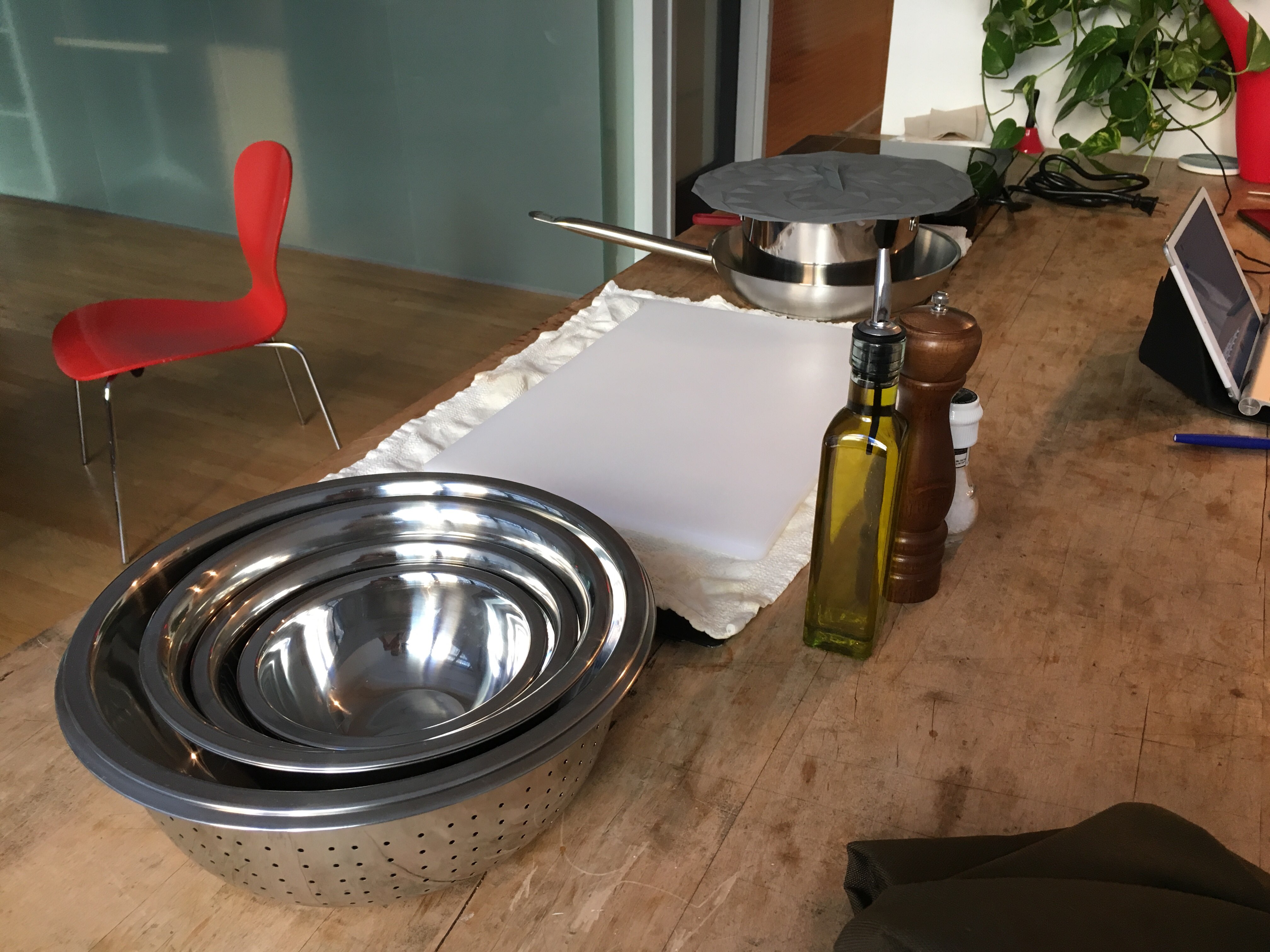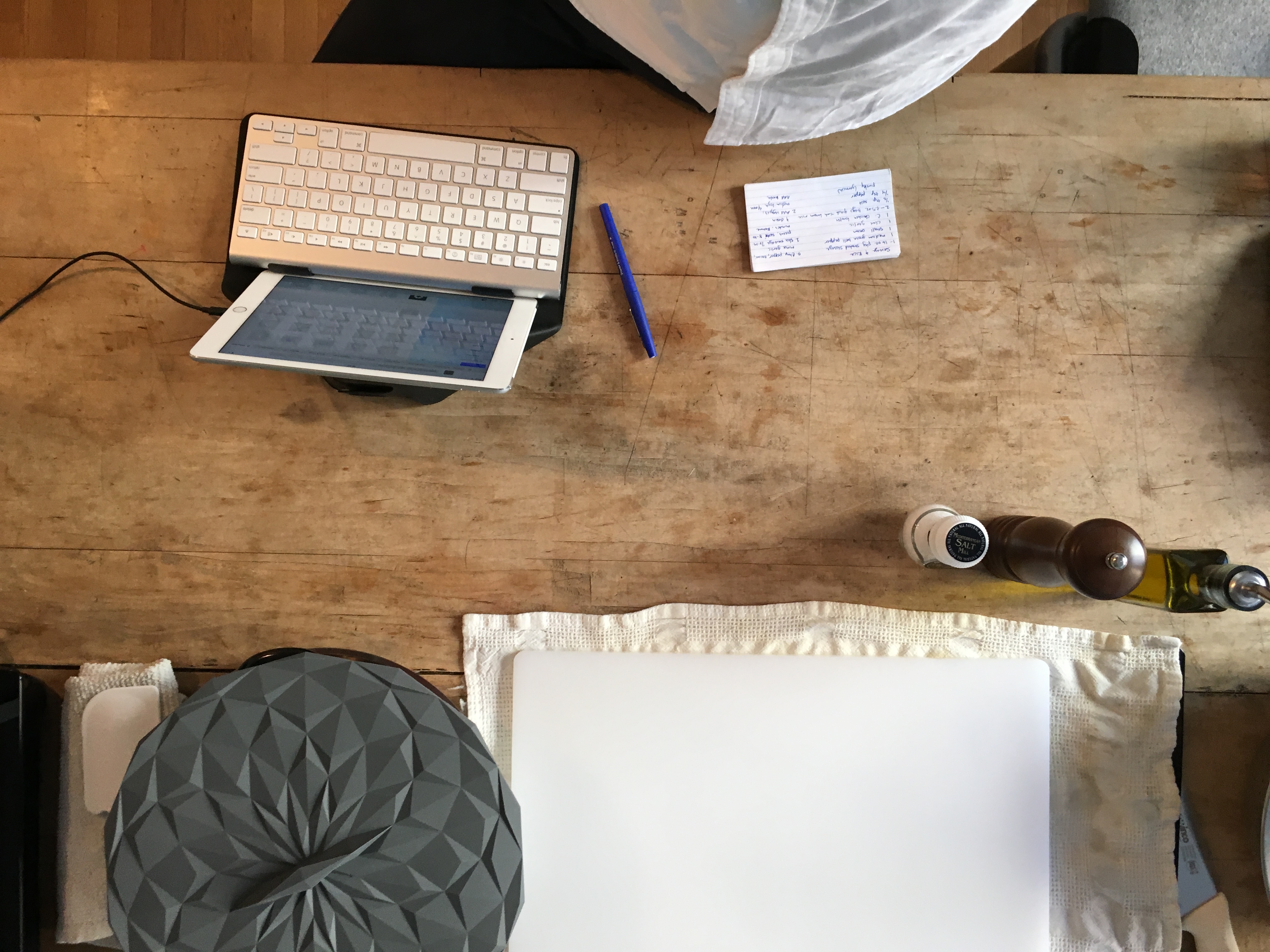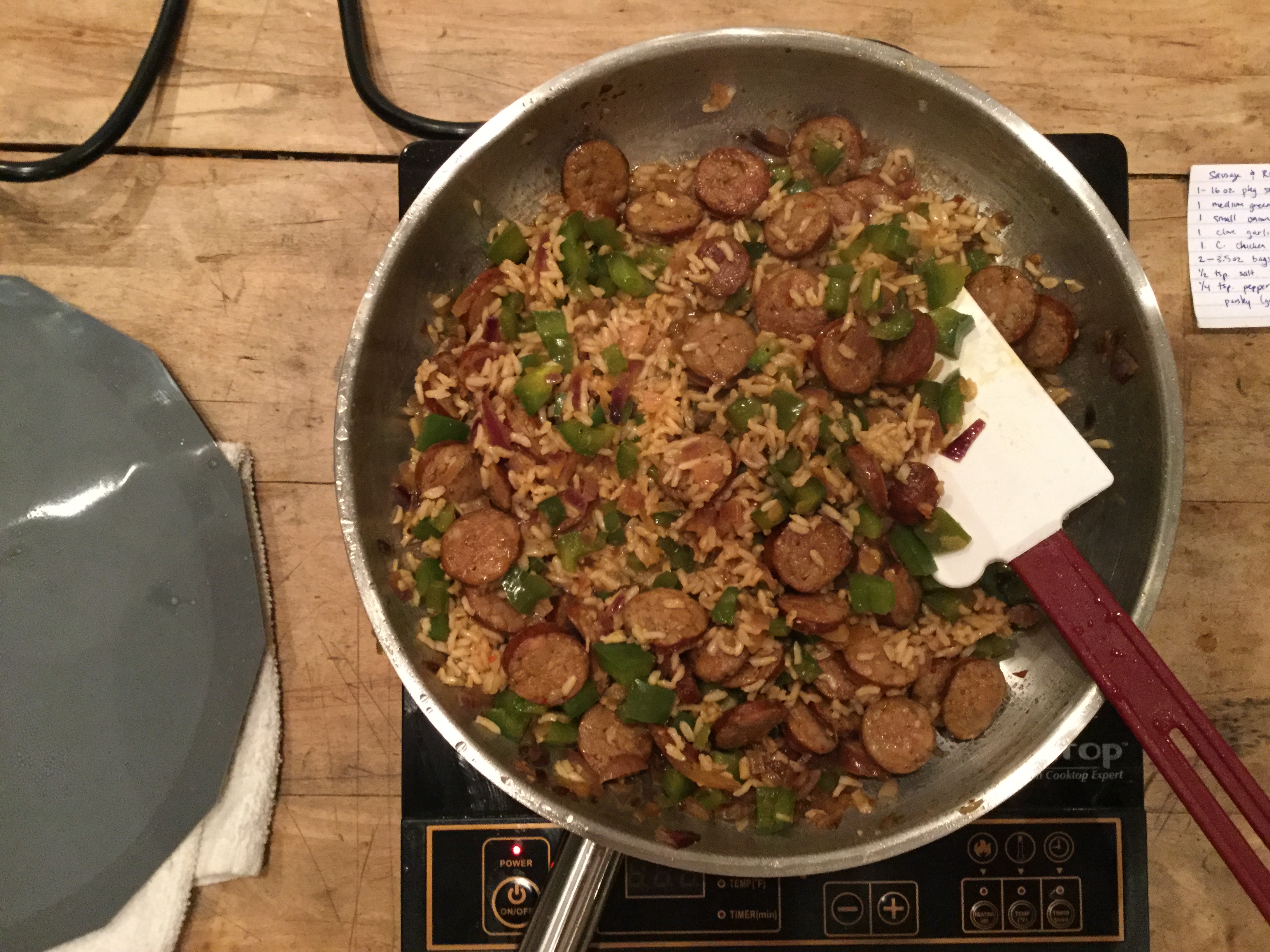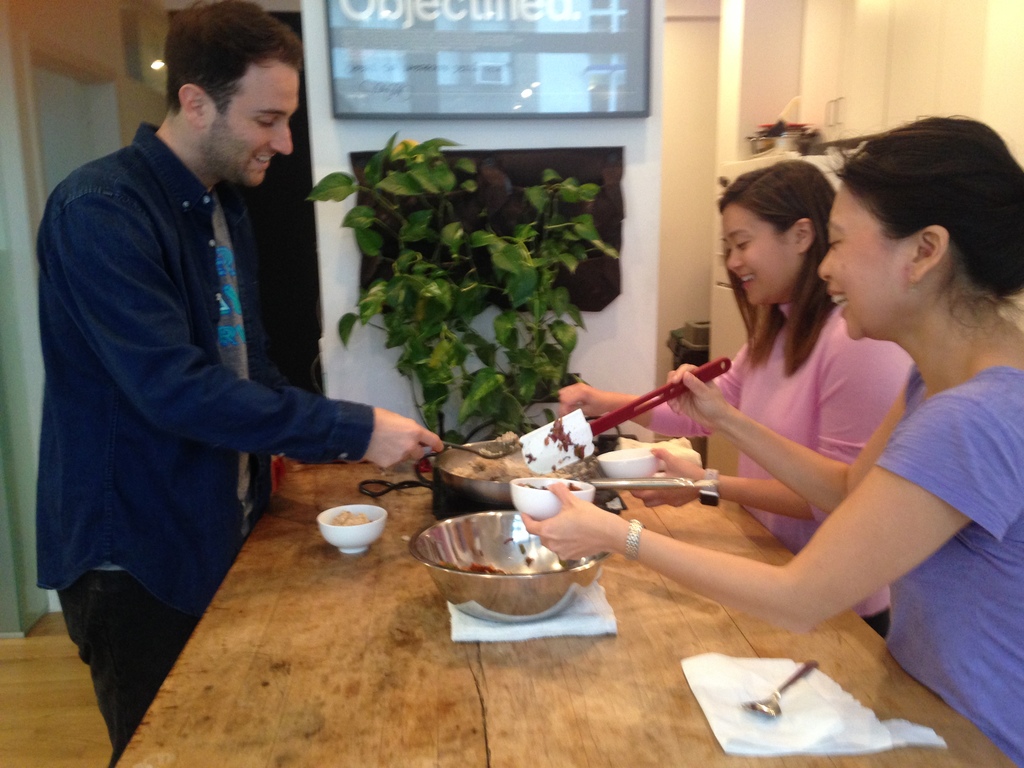What I Learned From My First Prototype
Despite my sudden trouble, the show must go on, and so I did and used what I could to re-establish a path forward.
The concept, a workspace for professionals that would also allow them to sell without the overhead of a traditional restaurant or retail space (along with an opportunity for investment), was an interesting one but an idea I’ve felt a little awkward about. When I looked at the space, I got concerned about the prevalance of commercial kitchens, “food incubators,” Smorgasburg, and places like Threes Brewing. Plus, a prototype to me felt like it had to be useable, and a systems idea did not make the cut.
So instead, I did a near about-face, focusing instead of the grand vision at the most essential concerns of cooking. I wanted to ask the question: What are the minimum tools and space required for a positive outcome?
The Minimal Equipment Prototype
I wanted to make as realistic a prototype as possible—it felt important that someone should actually be able to use it, and provide meaningful feedback about the experience.
My plan: A minimum set of equipment, anchored by a single induction burner, and additionally supplied with a modest set of supplies—a cutting board, knife, pot and pan, some prep and a couple other odds and ends. The hope was even if the first experiment failed, it would be a solid starting line for other means of experimentation.

So far, so good. With few exceptions the equipment seems to be enough to at least get started, so on I went with deciding how it should be done. It was a pretty informal process, where ultimately I settled on a one-pan dish whose ingredients were easy enough to find, and set up the equipment in the graduate studio.
Unfortunately, my recruiting process for the prototype was non-existent, and I scrambled towards the presentation finish line struggling to figure out who might try it out. Though I didn’t want to recruit friends, I didn’t have a good sense of where to get interested strangers, and so ultimately ended up asking friends anyhow.
Matt, My Potential User
This story will end badly, but it ended up providing a lot of insight.
My good friend, Matt, volunteered for the prototype, though he’s a self-admitted bad cook who gets stressed out about food.
He doesn’t really go shopping—in fact he finds it overwhelming—meal planning is an issue for him, and he’s constantly worried about the possiblity of the things he’s buying going bad. He almost never purchases anything that spoils, since he finds it a waste. All these things combine to a lot of restaurants or bodegeas, or buying things on sale where the guilt factor is lowered.
We did a quick shopping spree at Whole Foods, which unnerved Matt since he knew very little about what we were making or where we needed to be in the store. I wanted the shopping experience to be one fewer thing for him to deal with, so I pestered him with questions as we flew around the store to get more insights.
As we returned to the studio, I was confronted with an oversight: Access to the building. Since I hadn’t planned the prototype thoroughly, he couldn’t come up, which was my big screw up.
Cooking Without Matt
Getting ready for the experiment, despite the bad ending, was insightful. Since I wanted to make sure I had all the things, I transferred the recipe to an index card, and made sure that I had a clear understanding of how much (and what) I needed—and purchased in bulk for additional tests.

It helped me clarify what was being made and the process of making it. Though it’s an incredibly simple recipe, which could make it too easy to provide much insight, committing the recipe to the index card that made me hyper focused in the grocery store on where I needed to be and what kinds of things I needed to pick up.
It also opened my eyes to things that were not in traditional recipes. As a comparison, Blue Apron’s recipes do a decent job of trying to incorporate prep into the understanding of how long a meal takes, now even going so far as to estimate prep and cook times separately, but most don’t. In the case of this recipe, it includes the prep steps as part of the ingredient list, which to me is a kind of catastrophe.
My best bet was play testing the equipment for myself. I theorized at least I could ensure it was functional, and perhaps it would incite interest from others. It worked on the first point, though the only interest I conjured was hunger for my food.

Owing to the inconveniences of scheduling and everybody else’s midterms / group meetings / own tests and prototypes, there were no real takers. Plus, I wanted to know my concept worked for my own piece of mind, so, I tried the experiment out on myself first.
It was actually pretty straightforward and relatively easy, as such things go.
What I Learned from the First Prototype
What went well:
- This was a real activity! Rather than an invented scene or “imagine a scenario,” there were real objects and a task to complete.
- There were some moments of openness. Though there was a recipe and the equipment, I didn’t want to lead anybody through it step by step, so there was an ability to play a bit.
What did not go so well:
- It was overdesigned, without enough leeway. There weren’t many variables, so it was pretty prescriptive what was supposed to happen. Difficult to get much insight there.
- There was no clear hypothesis: It wasn’t clear what, precisely, I was trying to learn, so the lack of focus made it even more difficult to derive learnings.
- Ultimately I didn’t feel ownership over the space my prototype was originally set up in—not my personal studio, after all—so this first prototype was never set up ready to go. That probably hurt particpation, since it created an additional barrier to entry.
Other Miscellany
I have Max Kessler to thank for being one of the only outsiders to test my original concept, along with a couple others in the studio. That group found a couple of holes in available equipment—a missing set of measuring cups—which they thought was intentional, and felt the index card was a little too spare for cooking purposes.

As part of my shifting gears, I reached out to the former proprietor of The Walk-In Cookbook, a former grocery Park Slope that was angled at recipe-driven shopping. I wanted to find out a little more about what worked and what didn’t from his experiment.
He never got back to me—apparently he lives in Belgium or something, working at Uber. (At least that’s what LinkedIn tells me.)
My notes to potential test subjects in Slack read as follows:
Want to help me with an experiment in basic cooking? Here’s how to get started:
Tools:
- induction cooktop is on the second shelf in the large cabinet above the recycling, with towels and the recipe (though here’s a backup in case)
- cutting board and knife are next to the other knives in that same area
- skillet, silicone lid and prep bowls are on top of the fridge.
Ingredients:
- everything except the rice is in the fridge; that is on the second shelf of the smaller cabinet above the recycling. The pepper is also there, with salt nearby and olive oil should you need it.
Other tips:
- almost all of these things should have a piece of masking tape with my initials on it.
- the induction cooktop has ten power settings; five is medium-high, two is medium-low.
Mention me in Slack if this is unclear, and of course I would like to know your story. Happy cooking!
Addenda
Update, 2/5: Removed a reference to using my girlfriend’s computer as an interim step. Turns out I had used her computer in late summer, not in the fall.